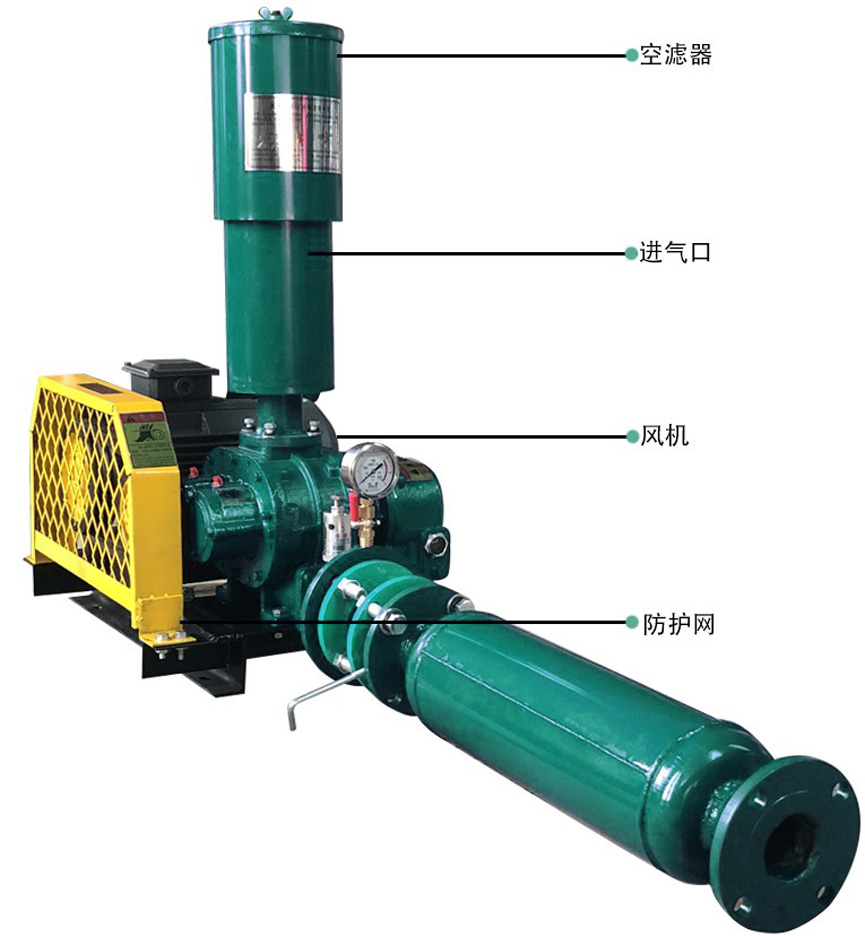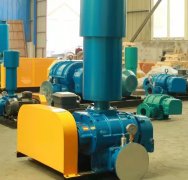How to increase water oxygen content with Roots aerator fan
Roots aerator fan is a widely used equipment in aquaculture, sewage treatment and other fields. The following is a detailed introduction to it:
1、 Structural composition
The Roots aerator mainly consists of two parts: Roots blower and aerator. The Roots blower is its core component, which compresses and delivers gas through the relative motion of two rotating blade rotors (usually three bladed impellers) inside the cylinder. The oxygenation device is responsible for converting the high-pressure airflow generated by the Roots blower into microbubbles and uniformly dispersing them into water.
2、 Working principle
The working principle of Roots aerator fan is as follows:
1. Impeller rotation: The motor drives one of the impellers to rotate, and through the action of the synchronous gear, the other impeller will rotate synchronously at the same speed and in the opposite direction.
2. Gas suction and compression: Due to the gaps between impellers, impellers and casings, and impellers and wall panels, a vacuum state is formed at the inlet during the rotation of the impeller, and air is sucked into the inlet chamber under atmospheric pressure. As the impeller continues to rotate, two of the blades of each impeller form a sealed chamber with the wall panel and casing, and the air in the intake chamber is continuously carried to the exhaust chamber by the sealed chamber formed by these two blades. Also, because the impellers in the exhaust chamber are interlocked, the air between the two blades is squeezed out.
3. Gas exhaust and oxygenation: Through continuous inhalation and compression, air is transported from the inlet to the outlet on site, and oxygen is dispersed into the water in the form of microbubbles through devices such as microporous tubes in the oxygenation device, thereby increasing the concentration of dissolved oxygen in the water.
3、 Performance characteristics
1. Large exhaust volume and high exhaust pressure: Roots aerator fans can provide stable and large gas output, while also having high exhaust pressure to ensure that oxygen can be fully dispersed into the water body.
2. Stable operation: Roots blower has the advantages of simple structure, easy manufacturing, low vibration, low noise, long-lasting performance, and long-term continuous operation.
3. Energy saving: The Roots aerator fan adopts advanced energy-saving technology and optimized design to reduce energy consumption and noise pollution.
4. Easy to maintain: The Roots aerator fan has a simple structure and is easy to perform daily maintenance and upkeep.
4、 Application Fields
Roots aerator fans are widely used in the following fields:
1. Aquaculture: providing sufficient oxygen for aquatic organisms such as fish and shrimp to promote their healthy growth. Especially in high-density aquaculture environments, Roots aerators can accurately control the oxygen supply to meet the needs of different growth stages and aquaculture densities.
2. Wastewater treatment: In the aeration tank of the wastewater treatment plant, the Roots aerator fan can continuously deliver a large amount of air to the water, allowing the microorganisms in the activated sludge to fully contact with oxygen, thereby decomposing pollutants in the wastewater and achieving the goal of purifying water quality.
3. Chemical production: used for transporting and stirring gases, such as ammonia and other gas raw materials in fertilizer production processes, while providing power during the stirring process in reaction vessels.
4. Other fields: such as cement conveying, pneumatic conveying, flue gas desulfurization and denitrification, ventilation, etc.
In summary, Roots aerator is a high-performance and widely used equipment that can provide stable and reliable oxygen supply for fields such as aquaculture and wastewater treatment.



